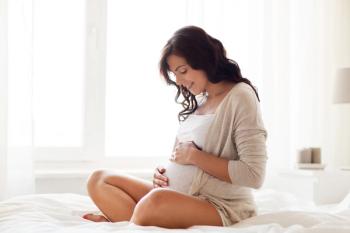
Are ob patients at risk for MRSA?
The rate of nares colonization with methicillin-resistant Staphylococcus aureus (MRSA) is low in obstetric populations, according to two presentations at this year's annual IDSOG meeting. Although the rate of MRSA colonization is estimated to be 6% to 8% in new hospital admissions, the rate of colonization in obstetric populations was 2% in both studies, performed by Dr. Mara Dinsmoor at Evanston Hospital in Evanston, Ill. and by Dr. Richard Beigi at Cleveland Metro Health Center in Cleveland, Ohio. The study from Illinois reported that over 50% of the colonized mothers had risk factors for MRSA colonization. There was one case of MRSA sepsis in a neonate born to a colonized woman, but the two strains of MRSA were genetically distinct, arguing against vertical transmission from mother to baby.
The rate of nares colonization with methicillin-resistant Staphylococcus aureus (MRSA) is low in obstetric populations, according to two presentations at this year's annual IDSOG meeting. Although the rate of MRSA colonization is estimated to be 6% to 8% in new hospital admissions, the rate of colonization in obstetric populations was 2% in both studies, performed by Dr. Mara Dinsmoor at Evanston Hospital in Evanston, Ill. and by Dr. Richard Beigi at Cleveland Metro Health Center in Cleveland, Ohio. The study from Illinois reported that over 50% of the colonized mothers had risk factors for MRSA colonization. There was one case of MRSA sepsis in a neonate born to a colonized woman, but the two strains of MRSA were genetically distinct, arguing against vertical transmission from mother to baby.
Newsletter
Get the latest clinical updates, case studies, and expert commentary in obstetric and gynecologic care. Sign up now to stay informed.










